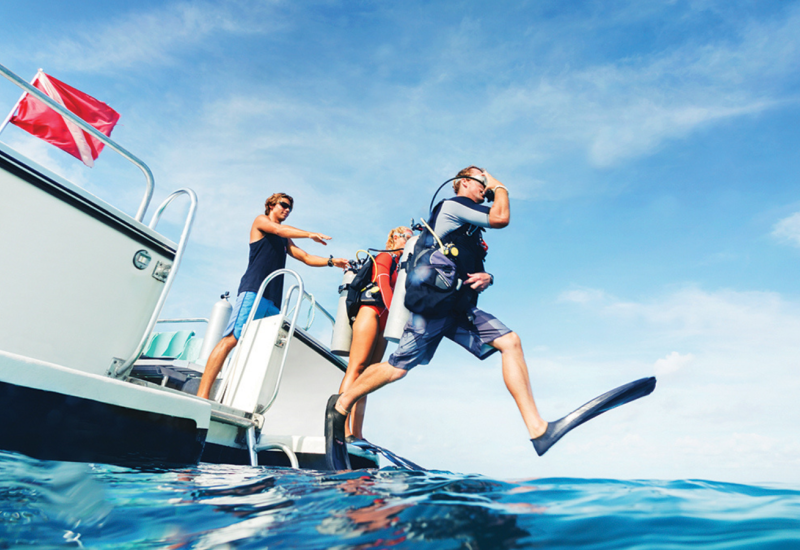Dive Training: 9 Tips for Avoiding Underwater Entanglements

Avoid Entanglement
Wrecks and kelp forests may be locations where divers get snagged. Avoid getting tangled up with these nine tips.
Lea Lee, Getty Images
1) Think Ahead Think about where you’ll be diving: Anything that sticks up from the sea bottom — wrecks, large bommies — is prone to snag abandoned nets and line.
2) Be Adaptable Some situations may dictate different types of entry. Enter kelp feet-first, feet-together, rather than a headfirst or back roll. A special technique for ascent can help with kelp: By remaining in one place, you’re usually able to create an exit “hole” by allowing exhaled bubbles to clear kelp fronds.
3) Streamline Many gear components are magnets for monofilament line. Develop a configuration that’s streamlined — equipment should not hang free or stick out.
4) By Design Even items that can’t be streamlined can pose a risk, such as snorkels and fin-strap buckles. Almost any snorkel poses some incremental hazard — consider tucking it away in environments such as inside a wreck. When buying gear, look at how sleek items are and whether they could be a snag hazard.
5) Freeze! If you feel “localized resistance,” stop and avoid struggling or twisting, which can make things more difficult to undo.
6) Back Up Sometimes slowly backing up a foot or two might be enough to release the snagged point.
7) Strip! (Relax, it’s just your gear.) If you can’t clearly see how you’re entangled but feel where the resistance is, remove the entangled fin or even BC, and move it to where you can fix the problem.
8) Cut It Out If it’s not immediately obvious that you can unwind the entanglement, pull out your dive knife or shears and carefully cut yourself free.
9) Get Help If you can’t quickly find where you’re entangled, signal your buddy for help.

Lea Lee, Getty ImagesWrecks and kelp forests may be locations where divers get snagged. Avoid getting tangled up with these nine tips.
1) Think Ahead Think about where you’ll be diving: Anything that sticks up from the sea bottom — wrecks, large bommies — is prone to snag abandoned nets and line.
2) Be Adaptable Some situations may dictate different types of entry. Enter kelp feet-first, feet-together, rather than a headfirst or back roll. A special technique for ascent can help with kelp: By remaining in one place, you’re usually able to create an exit “hole” by allowing exhaled bubbles to clear kelp fronds.
3) Streamline Many gear components are magnets for monofilament line. Develop a configuration that’s streamlined — equipment should not hang free or stick out.
4) By Design Even items that can’t be streamlined can pose a risk, such as snorkels and fin-strap buckles. Almost any snorkel poses some incremental hazard — consider tucking it away in environments such as inside a wreck. When buying gear, look at how sleek items are and whether they could be a snag hazard.
5) Freeze! If you feel “localized resistance,” stop and avoid struggling or twisting, which can make things more difficult to undo.
6) Back Up Sometimes slowly backing up a foot or two might be enough to release the snagged point.
7) Strip! (Relax, it’s just your gear.) If you can’t clearly see how you’re entangled but feel where the resistance is, remove the entangled fin or even BC, and move it to where you can fix the problem.
8) Cut It Out If it’s not immediately obvious that you can unwind the entanglement, pull out your dive knife or shears and carefully cut yourself free.
9) Get Help If you can’t quickly find where you’re entangled, signal your buddy for help.










